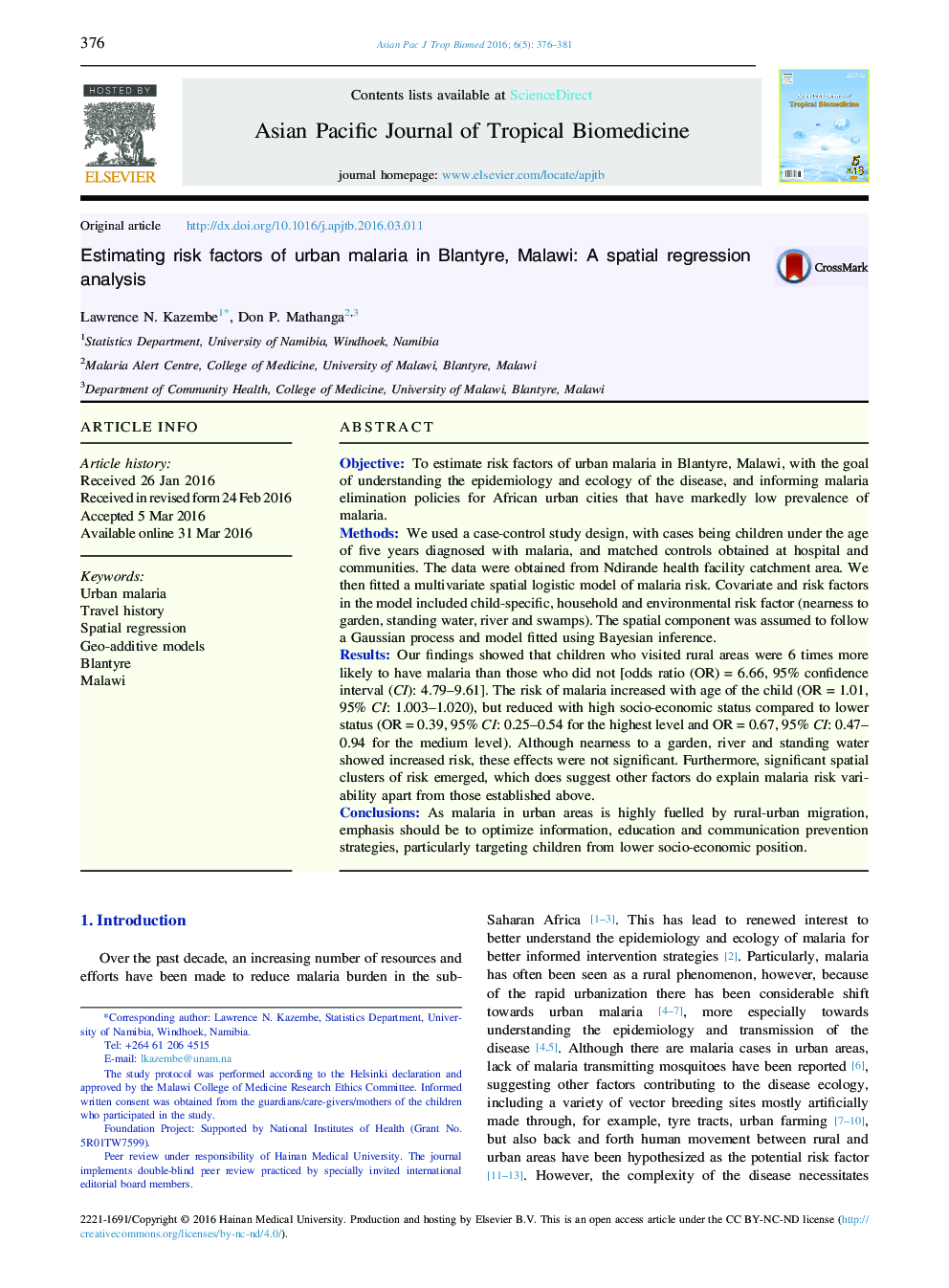| کد مقاله | کد نشریه | سال انتشار | مقاله انگلیسی | نسخه تمام متن |
|---|---|---|---|---|
| 2032525 | 1542865 | 2016 | 6 صفحه PDF | دانلود رایگان |
ObjectiveTo estimate risk factors of urban malaria in Blantyre, Malawi, with the goal of understanding the epidemiology and ecology of the disease, and informing malaria elimination policies for African urban cities that have markedly low prevalence of malaria.MethodsWe used a case-control study design, with cases being children under the age of five years diagnosed with malaria, and matched controls obtained at hospital and communities. The data were obtained from Ndirande health facility catchment area. We then fitted a multivariate spatial logistic model of malaria risk. Covariate and risk factors in the model included child-specific, household and environmental risk factor (nearness to garden, standing water, river and swamps). The spatial component was assumed to follow a Gaussian process and model fitted using Bayesian inference.ResultsOur findings showed that children who visited rural areas were 6 times more likely to have malaria than those who did not [odds ratio (OR) = 6.66, 95% confidence interval (CI): 4.79–9.61]. The risk of malaria increased with age of the child (OR = 1.01, 95% CI: 1.003–1.020), but reduced with high socio-economic status compared to lower status (OR = 0.39, 95% CI: 0.25–0.54 for the highest level and OR = 0.67, 95% CI: 0.47–0.94 for the medium level). Although nearness to a garden, river and standing water showed increased risk, these effects were not significant. Furthermore, significant spatial clusters of risk emerged, which does suggest other factors do explain malaria risk variability apart from those established above.ConclusionsAs malaria in urban areas is highly fuelled by rural-urban migration, emphasis should be to optimize information, education and communication prevention strategies, particularly targeting children from lower socio-economic position.
Journal: Asian Pacific Journal of Tropical Biomedicine - Volume 6, Issue 5, May 2016, Pages 376–381
